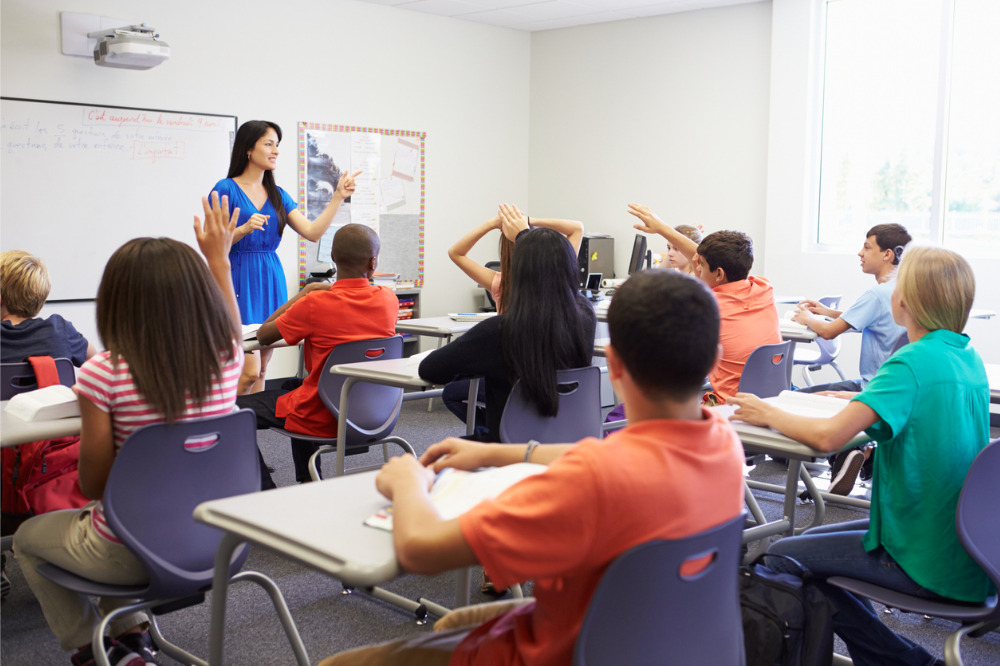
In August, the NSW Government released its back-to-school plan which laid out a staggered return to face-to-face learning for all students starting 25 October.
With the announcement came the next logical question: how do we ensure that schools are safe when students and staff return? After all, we’re knee-deep in a serious pandemic that has killed more than 4.5 million people and infected 219 million others.
Below, Professor C Raina MacIntyre from UNSW’s Kirby Institute, Greg Kelly, a senior lecturer at the University of Queensland, Associate professor Holly Seale from UNSW and Richard Holden, a Professor of Economics at UNSW, share five ways that schools can ensure students and staff are as safe as possible when school returns.
1. Vaccinate the adults around them
In California, a primary school outbreak occurred when an unvaccinated teacher, who came to work despite symptoms, read to students with their mask off. Most kids who became infected were well over 2 metres from the teacher, which confirms the 1-2m distancing rule is not effective for an airborne virus.
Every child and teacher in a classroom or childcare centre with an infected person is at risk. Shared air is the major way SARS-CoV-2 — the virus that causes COVID-19 — spreads.
Children often get the virus from the adults around them, so vaccinating adults in a child’s household, and teachers, can help protect them.
Vaccination is now mandatory for teachers in NSW, but around 67% have had one dose. This probably corresponds to less than 40% of the NSW population being fully vaccinated.
One dose of vaccination gives about 31% protection and two doses gives 67% (AstraZeneca) to 88% (Pfizer) protection against the Delta variant. Most kids will still be unvaccinated if schools in the two largest states re-open for the last term of the year. This means it’s even more important to ensure the adults are vaccinated.
2. Mandate masks for teachers and students
We can mandate masks in schools for teachers and students, and highly recommend mask use for younger children in childcare.
The American Academy of Pediatrics recommends masks for children two years and up; children over this age can wear masks without much trouble.
As mask use in schools has been more common overseas, there are now numerous toolkits (including translated versions) and recommendations to support children to wear a mask. For example, your child is more likely wear a mask if it has their favourite colour, sports team, character or special interest on it.
Importantly, a DIY cloth mask can be made to fit your child’s face and be high quality if key design principles are followed. It is important to ensure children have choices and understand the reason why they are wearing a mask (for instance: “When we wear a mask, the virus can’t jump from person to person.”
3. Ventilated classrooms
Classrooms can be ventilated by opening windows (ideally two windows at opposite ends of the room). If there is only one window, a fan can help move the dirty air out. If opening windows is not possible there is fortunately a cheap fix available — portable air purifiers, which dramatically reduce the viral load in classrooms.
There are DIY methods for making air purifiers, too.
4. Reduce numbers of people indoors
Reducing the number of people packed together in a classroom can reduce the risk of COVID. For example, during high epidemic periods, if the decision is made to open schools, a group of kids can come in every second day and learn online on alternate days.
We have shown this approach, when combined with masks, reduces the risk of transmission on university campus.
Use of outdoor spaces for lessons is also a smart move as the weather gets warmer. While Delta can transmit outdoors, the risk is likely much lower.
5. Test school kids
Finally, rapid point-of-care testing in schools will help reduce transmission, and self-testing kits (when approved in Australia) can help.
Saliva tests are also a practical way to test children. These tests are now available in official health settings, so governments could make them available to schools.
The original version of this article appeared in The Conversation.


